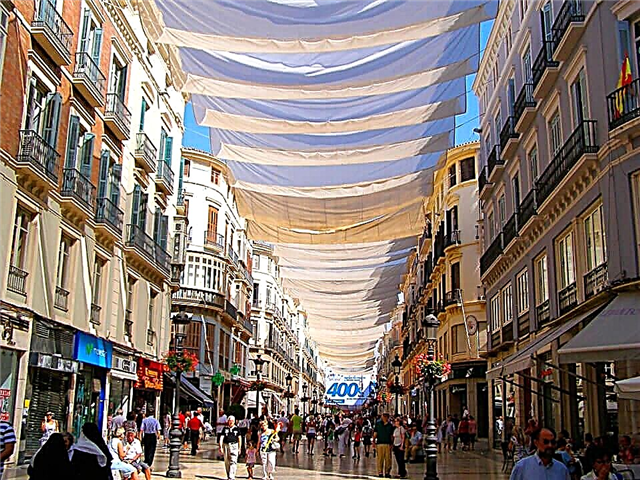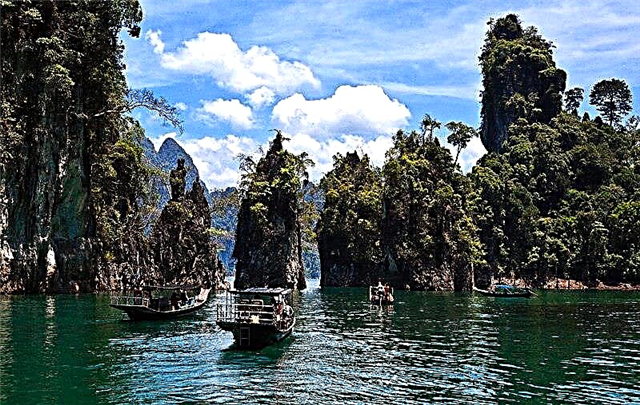Scottish expanses ... The combination of unique nature, rich history and interesting facts make this country very popular in terms of tourism. Of course, the prospect of getting to know local traditions and quirks, and getting plenty of breath in the dizzy air are good reasons for visiting this amazing country. But this is not what most tourists come to this region for. The main purpose of their trip is to visit the mysterious reservoir of Loch Ness, about which there are so many legends and many documentaries have been filmed.
Where is
Perhaps there is not a single person who has not heard the chilling stories about a certain creature of unthinkable proportions that has lived in a Scottish lake since time immemorial. And the locals, it seems, decided to finally convince the visitors of this, vying with each other to present photographs and video clips in which the "monster" will show its tail, then stick its head out of the water ...
An impressive freshwater body of water located in the heart of Scotland. The easiest way to get to these parts is from the small port city of Inverness, from which you need to move to the southwest.
Features of the lake
In addition to interesting legends and beliefs, the mystery of which is shrouded in Loch Ness, it can boast of other natural features. For example, despite the relatively small width of the water surface (only 2 km), the reservoir has a huge length - as much as 37 km! In addition, there is the greatest depth here, which in some places exceeds 200 meters. The lake has become part of the state water system and plays an important role in meeting the energy needs of local residents.

There is one more feature that only acted as an additional catalyst for the emergence of chilling stories about the lake. If you look closely, you will notice that the water here is cloudy, although it is clear. This is due to the high content of peat in the bottom soil. Therefore, the surface appears even darker, even in the clearest weather.
Legends of the monster Nessie

Of course, there are a great many such reservoirs on our planet. Therefore, one should not associate the wide popularity of Loch Ness with its size and role in ensuring the life of the country. The lake became famous thanks to either a fictional or a real monster that settled in the depths here. Locals nicknamed him Nessie, and the legends about his bloodthirsty character only fuel the interest of visitors and force them to “devour” another portion of inventions with open mouths.
For the first time, the mention of an amazing and mysterious inhabitant of the lake appeared several centuries ago. In those distant times, when a person did not yet have instruments and equipment that allow him to capture a phenomenon on film, analyze or conduct a study of the entire reservoir, and wonderful animals that have occurred since the Paleolithic times, sometimes nevertheless met in the vastness of our amazing planet, such legends had good ground for their emergence. It is quite logical that they tried to explain the stories of the sailors-eyewitnesses by hallucinations or even called them fictions.

The monster appears before us in the form of a huge seal with a disproportionately long neck, which brings awe and horror to the many fishermen who risk their lives every day and go fishing. There are references to Nessie in Roman historical references. Allegedly, even the most daring legionaries were put to flight at the sight of a huge animal of unknown origin. All fishermen and bathing enthusiasts who disappeared without a trace were also attributed to the tricks of the monster, without even considering more plausible versions of their possible death.
Today Nessie is the modern mascot of the valley, and his image is actively used by local merchants, who made a good fortune selling souvenirs depicting the legendary monster.

But the peak of the popularity of the deep dweller and the mission to capture him came in 1933 after the publication in one local newspaper of an eyewitness story who personally encountered the monster and was able to survive.
Even today, when a large-scale study of the reservoir has been carried out, there is no consensus among scientists. There is a theory among supporters that the monster exists and belongs to the ancient species of plesiosaurs. Opponents of the theory cite in confirmation of their correctness the conclusions of researchers of the depths of the lake and the bottom. We can only wait for the denouement of these protracted disputes.
Sights

But the Great Glen Valley, in which the lake is located, boasts other attractions as well. For example, on the banks of Loch Ness there are many ancient settlements, in which special traditions and customs have been preserved even today. The life of the inhabitants of coastal settlements is of genuine interest among tourists, who listen with enthusiasm to the legends about the mythical Nessie from the first hand.
But it is especially crowded in the vicinity of the Scottish castle. The building has a long history. According to historical sources, there were military fortifications in this place as early as the 6th century. The castle has a long history and during its entire existence it managed to change many owners. There is evidence that even representatives of the English family of Comins lived here. The impregnable walls of the fortification made it possible to hold the siege for many months and only a couple of hundred people could cope with this difficult task. Today, the castle is visited annually by more than 300 thousand tourists, which makes it one of the main historical attractions of Scotland.

There are also artificial parts of the land on the lake - small island formations, which are called crannogs in the country. During one of the many excursions, you can visit any of them and look at the huge lake from a different angle.
Even if you do not believe in the myths about ancient monsters, it is worth visiting these lands at least for the sake of sightseeing. Without any doubt, every tourist will find something interesting for himself!
Recommended reading Fingal's Cave in Scotland.











